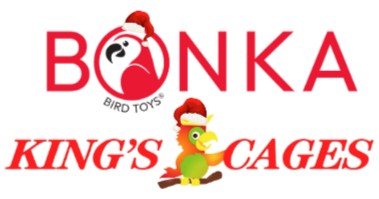Birds don’t just play for fun—they play to communicate, explore, and learn. Observing how your bird interacts with toys offers a fascinating window into their personality, instincts, and emotional well-being. Whether it’s shredding, swinging, or problem-solving, every play style tells a story.
In this article, we’ll explore how different types of bird play reveal key behaviors, and how to use toys to support your bird’s physical and mental development.
Why Bird Play is Important
Play is essential for:
-
Mental stimulation
-
Physical exercise
-
Bonding and trust-building
-
Preventing boredom and destructive habits
When your bird is playing, they’re not just having fun—they’re expressing themselves.
What Your Bird’s Play Style Says About Them
🪵 The Shredder
Loves: Tearing apart paper, palm leaves, or balsa wood
Behavior Insight: A sign of natural foraging behavior. This bird is curious, active, and needs constant stimulation.
🧠 The Problem-Solver
Loves: Puzzle toys, foraging challenges, treat-dispensing toys
Behavior Insight: This bird thrives on mental stimulation and benefits from rotating toys and training games.
🛝 The Acrobat
Loves: Swings, ropes, ladders, and climbing challenges
Behavior Insight: Energetic and agile, this bird needs plenty of space and movement to stay balanced and healthy.
🎨 The Collector
Loves: Rearranging small objects, hiding things in food bowls
Behavior Insight: Birds with nesting or territorial instincts may hoard or organize. It’s a sign of intelligence and environmental awareness.
🦜 The Vocalist
Loves: Toys that make sound or reflect light (bells, mirrors, jingles)
Behavior Insight: This bird seeks interaction and may enjoy training or mimicking your voice. Vocal toys can be great, but avoid overstimulation.
How to Support Your Bird’s Play Behavior
-
Match toys to their personality (don’t assume one-size-fits-all)
-
Rotate toys every week to keep things exciting
-
Observe how they interact—play can change with age, health, and mood
-
Play with them—many birds enjoy cooperative games with their humans
Watch for Behavioral Red Flags
Sometimes, lack of play or changes in toy interaction signal deeper issues:
-
🧍 Bird stops playing = Possible boredom or illness
-
😠 Aggression with toys = Stress, hormonal changes, or frustration
-
😴 Lethargy or disinterest = Lack of stimulation or potential health concern
Always consult an avian vet if behavior changes suddenly.
Final Thoughts
Your bird’s play behavior is one of the best ways to understand their needs, emotions, and instincts. By providing a variety of stimulating toys—and watching how your bird uses them—you can create a happier, healthier, and more enriching life for your feathered friend.
